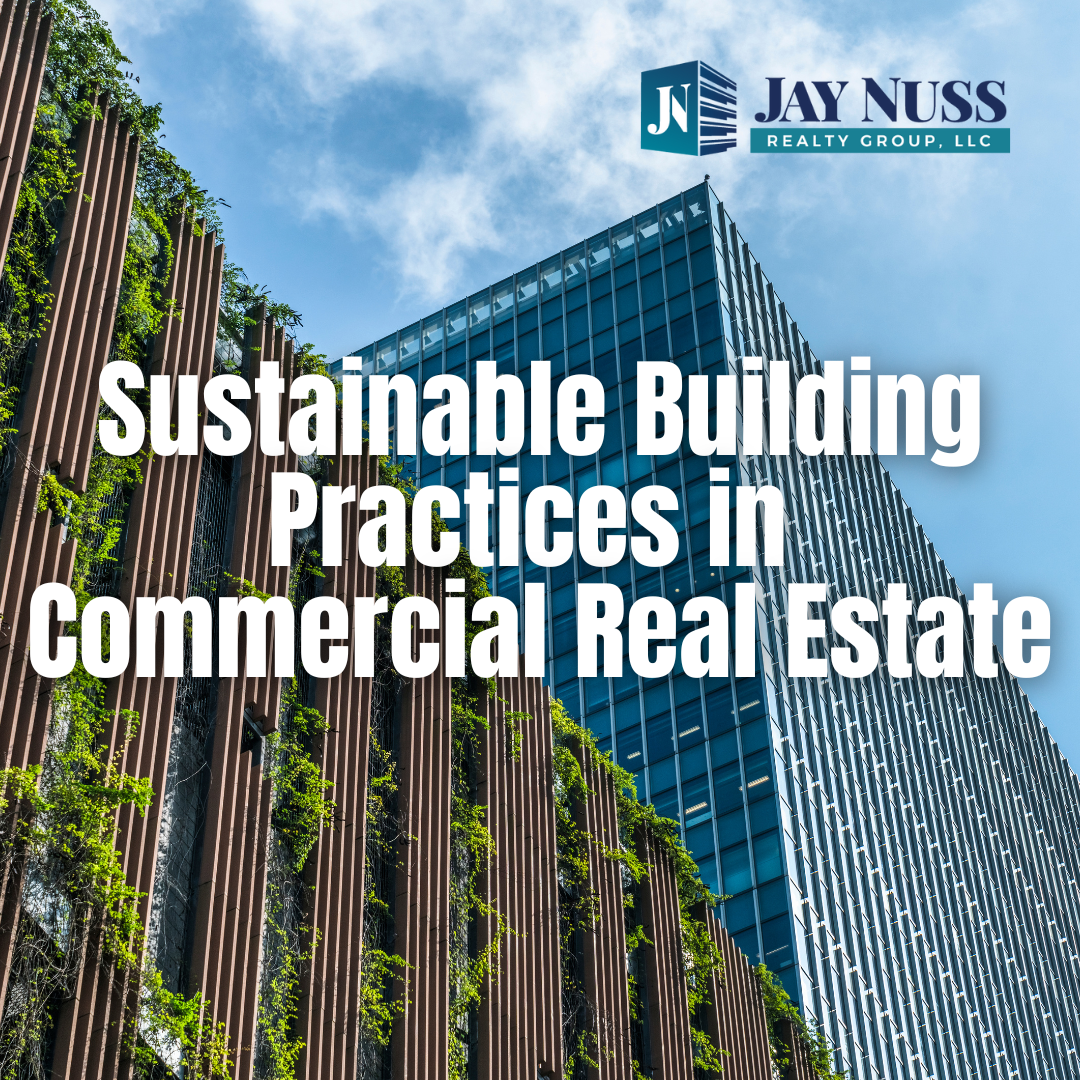In today’s commercial real estate market, sustainability is no longer a niche concern. It’s a critical factor that can impact everything from a building’s value and operating costs to its attractiveness to tenants and investors.
As commercial real estate consultants, we see this trend playing out firsthand. Tenants are increasingly demanding sustainable features in their office spaces. Investors are looking for properties that meet green building standards. And municipalities are enacting stricter regulations on energy use and emissions.
Why Sustainable Building Practices Matter
There are multiple reasons why sustainable building practices are becoming increasingly important in commercial real estate. Here are a few of the key drivers:
Environmental Impact:
The building and construction industry is a major contributor to greenhouse gas emissions and resource consumption. Sustainable building practices can help to reduce a building’s environmental impact by using less energy and water, and by using recycled or renewable materials.
Economic Benefits:
Sustainable buildings can be more energy-efficient, which can lead to significant cost savings over time. Additionally, green buildings often have higher occupancy rates and rental rates than traditional buildings.
Investor Demand:
Investors are increasingly looking for sustainable properties. This is due in part to the fact that green buildings are seen as being less risky and more resilient in the face of climate change.
Government Regulations:
Many governments are enacting stricter regulations on energy use and emissions in buildings. These regulations are likely to become more stringent in the future, making it even more important for commercial buildings to be sustainable.
How Green Building Certifications Can Help
Green building certifications provide a way for building owners to demonstrate that their buildings meet certain environmental standards. There are several green building certification programs available; some of the most popular include LEED (Leadership in Energy and Environmental Design) and ENERGY STAR.
Buildings that achieve green building certification can benefit from many advantages, including:
Increased marketability:
Green certified buildings are more attractive to tenants and investors.
Lower operating costs:
Green buildings are often more energy and water-efficient, which can lead to significant cost savings over time.
Government incentives:
Many governments offer tax breaks and other incentives for green certified buildings.
Improved occupant health and productivity:
Green buildings can provide a healthier and more productive work environment for occupants.
Sustainable Construction Methods
There are many different sustainable construction methods that can be used to improve the environmental performance of a commercial building. Here are a few examples:
Energy-efficient building envelope:
The building envelope is the barrier between the conditioned interior space and the exterior environment. A well-designed building envelope can help to reduce energy consumption by keeping the conditioned air inside and the outside air out.
Energy-efficient HVAC systems:
Heating, ventilation, and air conditioning (HVAC) systems are one of the largest consumers of energy in a commercial building. There are a number of ways to improve the efficiency of HVAC systems, such as using high-efficiency equipment and variable speed drives.
Renewable energy sources:
Renewable energy sources, such as solar panels and wind turbines, can be used to generate electricity for a commercial building. This can help to reduce the building’s reliance on the traditional grid and lower its greenhouse gas emissions.
Water-efficient plumbing fixtures:
Water-efficient plumbing fixtures, such as low-flow toilets and faucets, can help to reduce a building’s water consumption.
The Future of Sustainable Commercial Real Estate
The future of commercial real estate is sustainable. As environmental concerns continue to grow, and as government regulations become more stringent, sustainable building practices will become even more important. Building owners who invest in sustainable construction today will be well-positioned to meet the demands of tomorrow’s market.
Here are some additional tips for future-proofing your commercial real estate investment:
Conduct a sustainability audit:
A sustainability audit can help you to identify areas where your building can be improved.
Set sustainability goals:
Once you have identified areas for improvement, set sustainability goals for your building.
Develop a sustainability plan:
Create a plan to achieve your sustainability goals.
Track your progress:
Track your progress towards your sustainability goals and adjust your plan as needed.
Sustainable building practices are no longer a luxury; they are a necessity. By investing in sustainable construction, you can improve the environmental impact a project has on the community – and your bottom line.
For further information on this topic, please call us at 781-848-9400.

